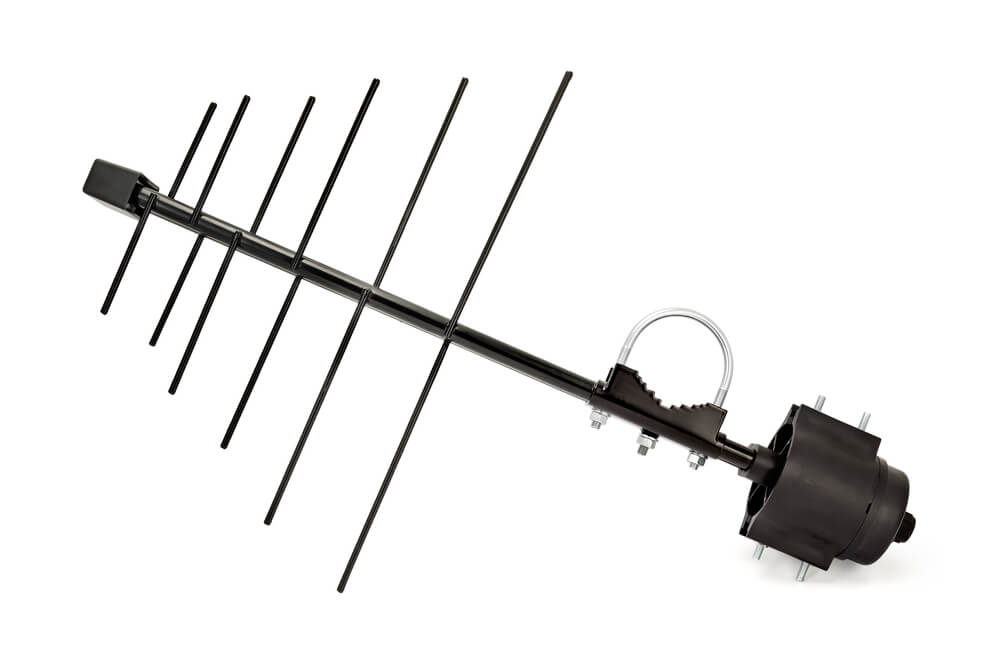You recently purchased an indoor TV antenna so that you can enjoy high-quality digital TV without having to subscribe to cable, but you are getting fewer signals than you need. Many people experience this in their everyday lives. Thus, the question is, why does this happen, and what can one do to try to rectify it?
Identifying Reception Problems
Distortions in digital TV reception differ from those of analog reception systems. Where a snowy or fuzzy picture is straightforward to interpret, a feeble signal on the digital front causes a picture to fantasise, freeze, or sputter. If you are facing all these problems, then you will be experiencing lousy reception.
Symptoms of Poor Reception
- Picture Breaks Up: It may become pixelated or split into small squares.
- Freezes: The image may momentarily stall before continuing to display the image correctly.
- No Signal: Sometimes, the screen may display a message ‘no signal. ’
These are some of the signs that your indoor TV antenna is not pulling in a good signal.
Common Causes of Indoor Tv Antenna Poor Reception
Several factors can contribute to poor reception with your indoor TV antenna:
Multiple TV Wall Points
If your signal is split between 2 or more TVs, then you will find that the signal strength will be much less. As each additional TV is connected to the antenna, a part of the signal is used, and therefore, the remaining strength that gets to each TV is compromised.
Distance from TV Transmitters
This is because staying far away from broadcast towers will likely yield a weaker signal. The further you are from the broadcast source, the weaker the signal before reaching your antenna.
Interference
Physical barriers such as hills, buildings, or trees can block antenna signals. Other obstacles in your home include metal roofs, thick walls, or any other electronic device.
Faulty Antenna or Installation
At other times, it could be a problem with the antenna itself or an error committed during the installation process. If your antenna is damaged or not correctly mounted, then signal reception will be significantly impacted.
Could an Amplifier Be the Solution?
If, for instance, your technician informs you that you have low signal strength, it may be advisable to buy a TV antenna signal booster.
What is a TV Antenna Amplifier?
A TV antenna amplifier, or signal amplifier, boosts weak signals captured by your antenna to one powerful enough to provide a clear picture and sound in your television. This is especially the case with digital TV, where a poor signal leads to no picture and/or sound at all.
Types of TV Antenna Amplifiers
Masthead Amplifiers
You attach These small boxes to your antenna or place on your roof. These amplifiers are helpful where there is a lot of interference or the antenna is situated quite a distance from the transmitter.
How Masthead Amplifiers Work: They are placed as near the antenna as possible to boost the signal before it is transmitted through any long cables, which would further reduce the strength of the signal.
Distribution Amplifiers
They are larger units installed indoors and are commonly found in apartments or houses with multiple television outlets. They boost the signal to make sure all the TVs get an excellent signal to feed on.
How Distribution Amplifiers Work: They are mounted where the signal is distributed to multiple TVs to ensure that each TV receives an optimal signal.
Read: The best indoor TV antennas in Australia 2024
Amplifiers vs. Signal Boosters
In the digital TV industry, the terms ‘amplifier’ and ‘signal booster’ are usually used collectively. Each device improves the reception signal and the quality of the picture on television. Whatever the name, such as an antenna amplifier booster or an antenna booster for TV, the primary purpose of these products is the same.
How Does a TV Amplifier Work?

The TV amplifier improves the signal and amplifies your TV’s frequency, resulting in a more precise image on your TV screen. An amplifier increases the strength of the signal you get from your Antenna to an optimum level to get a perfect picture and sound quality. The amplifier is powered through the antenna cable pulled from a power source near your TV.
Steps of Signal Amplification:
- Signal Reception: This is where the primary antenna consists of picks up the broadcast signal.
- Signal Amplification: This device increases the strength of the low signal.
- Signal Transmission: The signal gets enhanced and passes through the cable to your TELEVISION SET.
- Signal Reception at TV: Your radio broadcasts produce a louder, more precise sound and your television receives a better signal.
When Should You Use an Amplifier?
Although the signal issues are often solved with amplifiers, not all are required.
Weak TV Signals
For instance, if broadcasting towers are far from your residential area, an amplifier will boost the usually weak signals. This is especially useful in areas with complex terrain or even regions surrounded by hills or mountains.
Long Cable Runs
Sometimes, your antenna may be placed quite a distance away from your television, or if you have several sets, an amplifier will help you overcome losses due to the length of the cables. This helps ensure that every TV in your household receives a good signal.
Risks of Using an Amplifier
Using an amplifier when it’s not needed can cause problems, such as:
Over-amplification
Given that television signals are transmitted over a relatively long distance, with some obstacles in between, any too-strong signal ultimately tells a distorted or erroneous tale of reception. This occurs if the amplifier overamplifies the signal and the receiver gets overloaded with the received signal.
Interference
This may interfere with other works and devices or broadcasts already in progress. This can compromise not only your TV reception but also other electronic appliances in your home.
Unnecessary Costs
Amplifiers add extra costs and are undesired because of their potential failure in the future and the added cost. Using where it is unnecessary is an avoidable aspect of the entire process and must be avoided at all costs.
Alternatives to Amplifiers
Before installing an amplifier for your Indoor Tv Antenna, consider these alternatives:
Adjusting Antenna Placement
In some cases, you might have to reposition the antenna or point it in a different direction, which will help boost reception chances. Conversely, higher-placed and unenclosed positions are more likely to produce better results.
Upgrading Your Antenna
It is equally possible that the adoption of a better quality or one specifically designed for digital could solve the reception problem without necessarily having to amplify it. Pay attention to the king of the two antennas capable of picking up the VHF and UHF signals.
Conclusion
These can be employed when necessary and don’t necessarily require an amplifier for good reception for your TV. In this way, you will understand your state better and discuss with a technician whether an amplifier suits for your Indoor Tv Antenna. If you recognise the various requirements and potential reception problems, you’ll be able to get the right product and improve your likelihood of receiving a better-quality TV signal.
Additional Tips for Improving TV Reception
- Check Cable Quality: Ensure your antenna cable is in good condition. Damaged or old cables can degrade signal quality.
- Use a Signal Meter: A signal meter can help you find the best placement for your antenna by measuring signal strength.
- Eliminate Interference Sources: Reduce electronic interference by placing your antenna away from other electronic devices.
Following these tips and understanding when and how to use an amplifier can enhance your TV viewing experience and enjoy clearer, more reliable reception.








